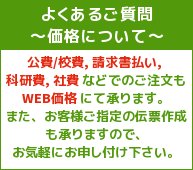Ecology of Coastal Marine Sediments
◆JpGU2025 セール開催中!:2025年6月30日(月)ご注文分まで
※上記表示の販売価格は割引適用後の価格です 出版済み 3-5週間でお届けいたします。 Form, Function, and Change in the Anthropocene Author: Thrush, Simon (Director, Director, Institute of Marine Science, University of Auckland, New Zealand) / Hewitt, Judi (Principal Scientist and Professor, Principal Scientist and Professor, National Institute of Water and Atmospheric Research, Hamilton and D Publisher: Oxford University Press ISBN: 9780198804772 Cover: PAPERBACK Date: 2021年02月 DESCRIPTION Marine sediments dominate the global seabed, creating the largest ecosystem on earth. Seafloor biodiversity is a key mediator of ecosystem functioning, yet critical processes are often excluded from global biogeochemical budgets or simplified to black boxes in ecosystem models. This accessible textbook provides an ideal point of entry into the field, providing basic information on the nature of soft-sediment ecosystems, examples of how and why we research them, the new questions these studies inspire, and the applications that ultimately benefit society. While focussing on coastal habitats (<200m depth) to emphasize process-based experimental studies, it is relevant to the full range of marine sedimentary habitats. The authors describe the interactions between marine organisms and their physical and chemical environment, demonstrating the need for carefully designed research programs and providing the basic steps required to formulate sound ecological questions before applying them to empirical studies of real-world ecosystems. The book reveals the connections between different system components and drivers of change, examining how we can develop knowledge on the biodiversity and functioning of soft sediments and apply it to a better understanding of ecosystem change, human impacts, and effective restoration. Ecology of Coastal Marine Sediments is intended for advanced undergraduate and graduate students who have completed a general ecology course but received no further training in marine science. It will also be useful to both professional researchers and resource managers in marine ecology and environmental science who seek a compact and authoritative introduction to sediment ecology. TABLE OF CONTENTS Part I: The Environment 1:The sedimentary environment 2:Benthic animals and plants and what they do to sediments 3:Disturbance, patches, and mosaics Part II: Doing Research 4:Design and the philosophy of sampling 5:Data collection methods and statistical analyses Part III: Communities 6:Describing assemblages and biodiversity of sediment-living organisms 7:Biotic interactions 8:Temporal variations in benthic assemblages and processes Part IV: Functioning 9:EF Ecosystem function 10:BEF Biodiversity-ecosystem functioning Part V: Anthropocene 11:Human Impacts 12:Climate change and seafloor ecology 13:Restoration of soft-sediment habitats Glossary

|
||||||||||||||||||||||||||||||||||||||||||||||||
























